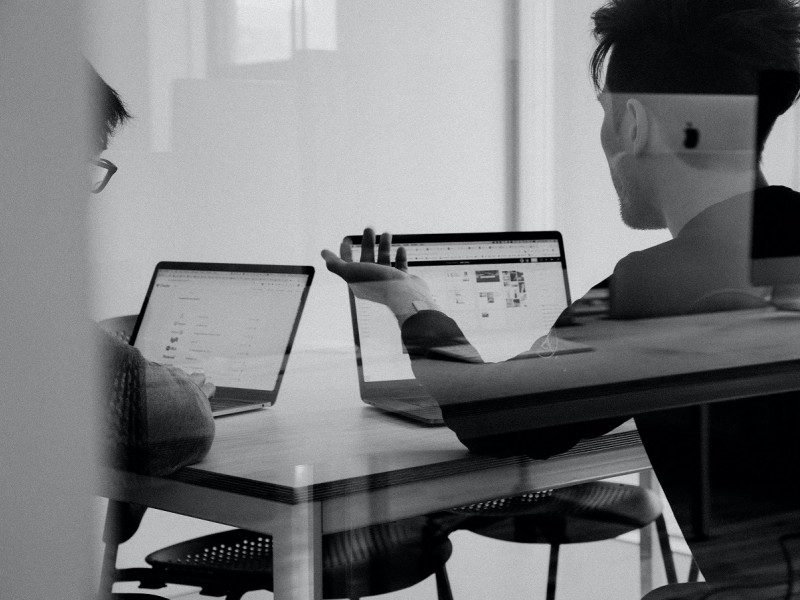The Office of the Future – a Hybrid Solution?
08 July 2020
Never before have offices been closed, simultaneously, for this long. However, many office light-switches have now been flicked on to allow for the staggered return of employees to the office.
By now, we are quite familiar with working from remote locations, but organisations rarely have had to manage the change of phasing employees back into the office environment.
Could it be an easier, breezier change strategy this time around?
No doubt it will require significant planning on the part of organisations in addition to accountability on the part of employees. In fact, managers are still aware of the emotional impact the pandemic had on entire organisations during this journey to juggle the balance of work productivity, home life, physical and emotional health.
Amorei Engelbrecht, an experienced organisational psychologist and organisational development manager at our client accounting and auditing firm ASL, cautions to keep in mind that a large proportion of an individual’s self-identity lies in their work identity. In combination, this identity contributes to their overall self-esteem, pride and self-worth.
“Workplace technology combined with digital infrastructure is helping us to work, engage and interact differently, but it will never replace social interaction fully. This is where the office environment remains relevant. Here we can share ideas, collaborate and tap into creative problem-solving,” she says.
Engelbrecht believes that we are learning how to create a new world of work. One where we can create an office environment for social learnings, and a digital space where we can work effectively remotely.
The birth of the hybrid workplace
Working remotely has given employees the ability to combine flexibility with autonomy when performing their jobs and work-related tasks. In turn, the traditional need to have a physical office has evolved.
However, the office has not necessarily become redundant. A recent South African survey by workplace consultants Giant Leap indicated that 86% of employees want to go back to working in an office.
The office has always been associated with the environment where employees are required to function at optimum productivity levels. On the other side of the pandemic, in a hybrid model, the office has the potential to be transformed into a ‘hub’ for collaboration and facilitating culture as opposed to a location focused on managing productivity.
Post COVID-19, organisations should consider readying their policies, procedures and systems to take into consideration desirable qualities of both remote working and in-office collaboration. This new hybrid style of collaboration – sometimes at the office, and other times from anywhere – could be the key to a healthier and more productive workforce.
A report by commercial real estate firm JLL supports this. The survey found that 69% of the over one thousand US employees would like to incorporate working from home in the future.
Office needs and behaviour are changing
Dave Russell, director of commercial leasing at Baker Street Properties, and Kriel & Co client says that the relevance for shared office space will remain. He says the purpose will be to come together on a more social level where employees and leadership will be sharing ideas and collaborate.
“Employees still need a space from which they can detach themselves from their home. I most certainly see the main headquarters and regional offices of companies remaining relevant within this hybrid model. However, it leaves property tenants in a very good position to cleverly negotiate lease agreements to meet the new needs of the office environment,” Russell says.
In the immediate short-term, the office experience might seem diluted in comparison to what it was. Going back to the office does not mean going back to the way things were before. Common areas are likely to be closed off and spaces like cafeterias or coffee bars cannot open yet in-line with ongoing health-driven parameters and policies.
Strategies to facilitate the transition back to the office
Although strategies are dependent on the organisation’s context and its needs, there are a few general guidelines and best practices to keep in mind:
- Identify a priority group of staff members very early on. Scrutinise the entire staff complement and determine who should be prioritised to return to the office to be able to function more efficiently. Utilise these staff members as the pilot group to test health parameters, new digital tools and COVID-19 interventions that are in place.
- Create designated risk areas. This approach may be most suitable to larger corporate settings as it allows employees to be grouped into areas based on the risk and exposure factors related to them. For example, separate on different floors or zones travelling employees from employees who only commute between the office and their home.
- Empower individual staff members to take responsibility. Employees should be expected to understand that there is a responsibility from both the organisation and individual for a successful transition. Employees should understand how they must take accountability for their own actions and level of risk they are engaging in when it comes to following protocols put in place to protect their own health and safety of and that of their colleagues.
- Manage productivity by encouraging a digital-first mindset. Given that organisations have functioned by way of virtual platforms and digital engagement for a couple of months, encourage employees to follow these practices even when working from the office. A practical example would be to declutter the office by adopting an approach on whatever you bring in, you take home with you.
When switching on the office lights, re-introducing employees into the workplace while keeping the balance between productivity and health and safety should be a priority.
It may be in the best interest of organisations to give staff members a choice as to whether they’d like to return to the office or work partly from home. Organisations should aim to position the office as a resource, not a requirement, to get the job done.





